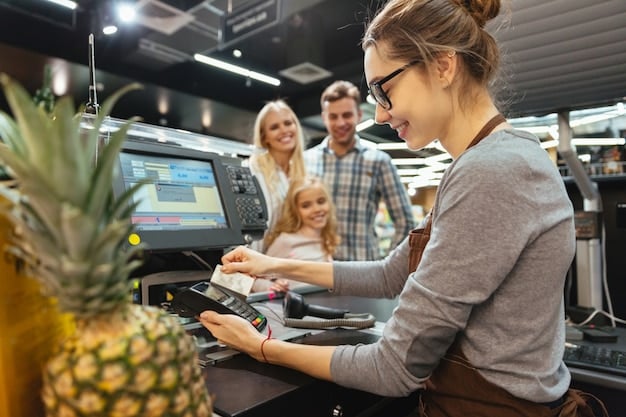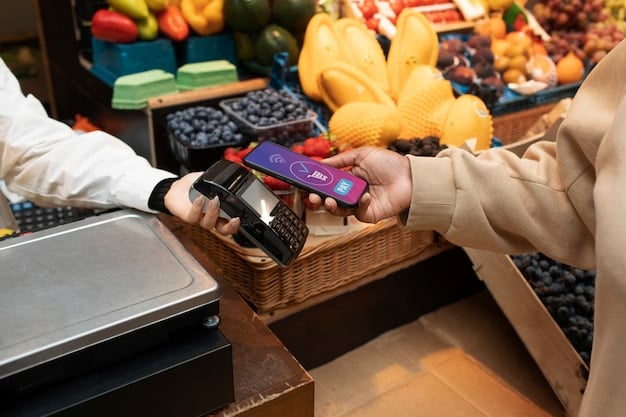In the fast-paced world of modern restaurant management, POS systems integrate with various business tools to streamline operations, reduce manual errors, and ultimately improve profitability. By connecting your point of sale system with other essential software like inventory management, employee scheduling, and marketing services, restaurants can unlock a more efficient workflow and gain access to data-driven insights. These integrations enable restaurants to manage transaction data more effectively, track sales across multiple channels, and automate routine tasks, saving valuable time. Whether it’s ecommerce POS integrations for online orders or POS integration links with third-party services like delivery platforms, the ability to manage operations from a single dashboard makes a significant impact on daily performance.
For local restaurants, especially small businesses, embracing POS system integrations has never been more important. These integrations not only facilitate smoother operations but also enable businesses to make informed purchasing decisions, optimize labor costs, and engage with potential customers more effectively. By incorporating integrations that track sales, automate employee schedules, and simplify sales tax calculations, restaurants can better manage their resources and improve their customer experience. The result is a unified approach that supports operational efficiency, increases customer satisfaction, and drives business growth in an increasingly competitive industry.
Save 80% of delivery management time
We handle everything:
- Dedicated operations manager
- Real-time tracking dashboard
- Automated customer notifications
- Urgent issue resolution
What is a POS System Integration and How Does It Work in Restaurants?
A POS system integration connects your point of sale system with other essential business tools, such as inventory management systems, accounting software, customer relationship management (CRM) platforms, and more. This integration ensures that data flows seamlessly between different systems, making it easier for restaurants to manage operations and make informed decisions. For example, when a customer makes a purchase, the data is instantly sent to your POS system, which then updates inventory levels in real time. This automated flow of data eliminates manual data entry, which can be prone to errors, and allows restaurant managers to have a unified view of their business.
In the context of inventory management POS integrations, this means that as an item is sold, the stock levels are automatically updated in your inventory system, helping to prevent overstocking or running out of key ingredients. These integrations also offer real-time insights into sales trends and inventory usage, allowing managers to make smarter purchasing decisions and streamline the ordering process. In summary, POS integrations empower restaurants to operate more efficiently by connecting all the essential systems together in a cohesive and automated workflow.
10 Must-Have POS Integrations for a More Efficient Restaurant

POS system integrations are key to improving efficiency in restaurants. By connecting your POS with essential tools like inventory management, payroll, and online ordering, you can streamline operations, reduce errors, and make data-driven decisions. Here are 10 must-have POS integrations that can help take your restaurant to the next level.
Foundational POS Integrations for Operational Excellence
1. Reporting & Analytics Integration
Reporting and analytics integrations are vital for restaurants to track and interpret key metrics, providing a clear picture of both financial and operational performance. By seamlessly integrating your POS system with advanced reporting tools, restaurant owners and managers can access real-time insights into sales, inventory, and labor costs, which allows for more informed decision-making. Detailed reports on sales data, customer behavior, and product performance give you the opportunity to analyze trends, optimize menus, and make adjustments to labor schedules based on peak times. These insights ensure that the restaurant can operate efficiently, reduce waste, and improve profitability.
Moreover, integrating analytics tools with your POS system simplifies data visualization, making it easier to track important metrics at a glance. Whether it’s analyzing inventory levels or understanding employee performance, the integration links operational data with reporting software to identify inefficiencies and opportunities. For example, tracking menu performance via POS can show which items are underperforming, guiding decisions on pricing adjustments or item removal. Furthermore, restaurant owners can easily compare performance across multiple locations, enabling them to implement consistent improvements.
Best Reporting & Analytics Integrations
Toast POS: Provides real-time sales dashboards, menu performance tracking, and labor cost analytics. It integrates with Xero and QuickBooks for financial consolidation.
Lightspeed Restaurant: Offers AI-driven sales forecasting, waste tracking via recipe costing, and multi-location comparison reports synced with inventory systems.
Square for Restaurants: Features customizable KPI dashboards, employee sales performance tracking, and integrates with Google Analytics to provide customer behavior insights.
Customer-Centric Integrations
2. CRM & SMS Marketing Tools
A Customer Relationship Management (CRM) system integrated with SMS marketing tools enables restaurants to build stronger relationships with their customers through personalized and timely communication. By using CRM data stored in the POS system, restaurants can track customer preferences, such as favorite menu items or dietary restrictions. This information is valuable for tailoring SMS campaigns, sending promotions, loyalty rewards, or personalized offers that make customers feel valued. By reaching out via SMS, a more immediate and engaging platform, restaurants can increase customer engagement and drive repeat business.
These integrations also allow businesses to segment their customer base, sending targeted messages based on behavior, purchase history, or even birthdays. This personalized approach leads to higher conversion rates and improved customer loyalty. Additionally, CRM systems can store customer feedback, helping you refine your marketing strategies, understand customer sentiment, and improve overall service. The combination of CRM and SMS marketing fosters long-term relationships and supports a customer-first approach that directly impacts revenue and growth.
Best CRM & SMS Marketing Integrations
SevenRooms: Automates birthday offers, tracks guest preferences, and sends reservation confirmations via SMS with upsell prompts.
Olo CRM: Manages allergen preferences, syncs loyalty points with online orders, and triggers SMS campaigns based on order history.
TouchBistro: Combines tableside ordering with customer profiles, enabling servers to view dietary restrictions and send post-visit SMS surveys.
3. Loyalty Program Platforms
A loyalty program integration is essential for any restaurant aiming to retain customers and foster repeat visits. This integration connects your POS system with loyalty software to track customer behavior and offer rewards such as discounts, special promotions, or exclusive access to menu items. The benefits of loyalty programs are twofold: customers feel appreciated for their loyalty, and restaurants gain valuable insights into their customers’ purchasing habits, which can drive future marketing efforts. When integrated with your POS system, loyalty points are automatically awarded based on purchases, ensuring a seamless experience for both the customer and the staff.
Moreover, a loyalty program integration helps restaurants increase revenue by encouraging more frequent visits and higher spending. By utilizing customer data, restaurants can offer personalized rewards tailored to individual preferences, such as free meals or exclusive menu items for frequent visitors. Additionally, loyalty programs can be tied to customer feedback and engagement, rewarding customers for reviewing their dining experience or referring friends to the restaurant, which helps expand the customer base.
Best Loyalty Program Integrations
Punchh: Provides tiered rewards, gamified challenges (e.g., “Try 5 appetizers”), and social media-linked referral bonuses.
LoyaltyLion: Integrates with Shopify POS for unified online and in-store loyalty points, VIP member events, and dynamic reward expiration policies.
Thanx: Uses machine learning to predict churn risk, offers “skip-the-line” perks for top-tier members, and syncs with email marketing tools.

Financial and Payment Integrations
4. Payment Processing Systems
Payment processing integration ensures that restaurants can accept various payment methods securely and efficiently, without the hassle of managing multiple systems. This integration connects your POS system with payment processors to enable the seamless acceptance of credit cards, mobile wallets, and NFC-enabled payments. Whether your customer pays via traditional methods like credit cards or newer technologies such as Apple Pay or Google Pay, the integration ensures all payments are processed quickly and securely. Additionally, integrating payment processing with your POS system allows for real-time tracking of transactions, which helps in generating accurate financial reports and simplifying end-of-day reconciliation.
A unified payment processing system also reduces errors associated with manual input, such as miscalculating tips or transaction totals. By automatically syncing payment data with the POS system, restaurants can ensure that all transactions are properly recorded, avoiding discrepancies during financial reporting. For higher efficiency, modern payment processors integrate with various sales channels—whether in-store or online—allowing restaurants to accept payments from multiple platforms while maintaining consistent data across all touchpoints.
Best Payment Processing Integrations
Stripe Terminal: Supports NFC/QR payments, automatically splits tips between front and back house, and detects fraudulent card patterns.
Heartland Retail: Offers surcharge program compliance tools, dynamic currency conversion, and encrypted mobile wallet payments.
PayJunction: Provides zero-fee ACH payments for large catering orders, recurring billing for subscriptions, and instant chargeback dispute resolution.
5. Payroll Management Integrations
Integrating payroll management with your POS system ensures a smooth, automated process for tracking employee hours, calculating wages, and handling taxes. Payroll integrations help reduce errors, such as overpaying employees or failing to meet local wage laws, by automatically syncing timesheet data from your POS to payroll software. With these integrations, restaurant managers can quickly process payroll, keeping labor costs in check and ensuring employees are paid accurately and on time. This leads to higher efficiency, fewer payroll-related mistakes, and improved employee satisfaction.
Payroll integration also helps restaurants comply with local and federal tax laws, as most systems are designed to automatically calculate and withhold necessary taxes. Additionally, it can generate detailed reports on labor costs, which can be compared to sales data to track the restaurant’s overall profitability. With automatic syncing between POS systems and payroll platforms, restaurant managers can save significant time and effort previously spent on manual payroll processes, ensuring a more efficient and compliant payroll workflow.
Best Payroll Management Integrations
Gusto: Auto-calculates overtime for tipped staff, files state and local taxes, and syncs clock-in data with POS sales reports.
Homebase: Tracks compliance with predictive scheduling laws, manages PTO accruals, and generates labor cost vs. sales reports.
ADP Workforce Now: Handles multi-state tax withholdings, integrates with POS tip pools, and offers ACA compliance reporting.
Operational Efficiency Integrations
6. Third-Party Delivery Aggregators
Third-party delivery aggregators provide restaurants with the ability to manage orders from multiple delivery platforms, such as Uber Eats, DoorDash, and Grubhub, through a single integrated POS system. These integrations consolidate orders from various platforms into one streamlined system, ensuring accurate order processing and preventing mistakes. By integrating delivery services with your POS, restaurants can manage their online orders alongside in-store ones, which simplifies inventory management, optimizes labor allocation, and ensures the restaurant stays on top of incoming deliveries.
Additionally, third-party delivery aggregators often include valuable features such as automatic menu synchronization, pricing updates, and the ability to manage surge pricing during peak times. These integrations also help mitigate the risk of errors in orders, such as those related to incorrect delivery instructions or product modifications, by automatically updating the kitchen with accurate order details in real time. This leads to faster and more efficient order fulfillment, enhancing the overall customer experience for delivery orders.
Best Third-Party Delivery Aggregators
Otter: Consolidates Uber Eats and DoorDash orders into your POS, auto-applies delivery surcharges, and provides driver ETAs on KDS.
Deliverect: Syncs real-time menu updates across 30+ platforms, throttles orders during rushes, and reconciles commission fees.
Chowly: Routes online orders to appropriate kitchen stations, flags modifier conflicts (e.g., gluten-free requests), and tracks packaging costs.
Operational Efficiency Integrations
7. Inventory Management Solutions
Inventory management integrations are crucial for maintaining stock levels, reducing waste, and ensuring that restaurants always have the necessary ingredients to meet customer demand. Integrating your POS system with inventory management software helps you track inventory levels in real-time, which minimizes the chances of running out of key ingredients. These systems use data from POS transactions to automatically update inventory levels as items are sold, giving restaurant managers a clear view of what’s in stock and what needs to be ordered. Additionally, advanced inventory integrations can alert managers when certain items are approaching low levels or when it’s time to reorder based on historical data.
Another key benefit of inventory management integrations is the ability to streamline purchasing decisions. By integrating your POS system with suppliers’ catalogs, you can automatically generate purchase orders based on real-time sales data, eliminating the need for manual tracking and reducing the risk of overstocking or understocking. For restaurants that rely heavily on ingredients with short shelf lives, such as fresh produce, this integration ensures that stock is used efficiently and that wastage is minimized. This system also helps with financial planning by accurately predicting ingredient costs, which leads to more informed pricing decisions and better cost control.
Best Inventory Management Integrations
MarketMan: Tracks waste via POS recipe data, auto-generates purchase orders, and benchmarks food costs against industry averages.
xtraCHEF: Uses OCR to digitize supplier invoices, predicts ingredient price fluctuations, and alerts about expired inventory.
BlueCart: Integrates POS usage data with supplier catalogs, enables one-click ordering, and tracks delivery SLAs.
8. Kitchen Display System (KDS) Integration
Kitchen Display System (KDS) integrations are designed to improve order accuracy and efficiency in the kitchen by displaying real-time orders in a digital format. By linking your POS system to a KDS, all orders are automatically sent to the kitchen, reducing errors that often occur when orders are written manually. This integration allows kitchen staff to quickly view and prioritize orders based on order types, cooking times, and customer requests. With color-coded tickets and easy-to-read displays, KDS ensures that orders are fulfilled in the correct sequence, improving the speed of service and customer satisfaction.
Moreover, KDS integrations help manage order flow during peak hours by providing kitchen staff with real-time updates on order status. These systems can track preparation times, flagging delays and ensuring that all orders are completed in a timely manner. Additionally, modern KDS solutions integrate with inventory systems to track ingredient usage, helping kitchen managers identify shortages in real-time and adjust preparation processes accordingly. The integration leads to better organization in the kitchen, fewer mistakes, and faster order processing.
Best KDS Integrations
KitchenHub: Color-codes tickets by order type, syncs cook times with IoT sensors, and prioritizes VIP tables.
Ordermark KDS: Routes online orders to specific prep stations, shows allergen alerts in red, and integrates with smart timers.
Omnivore KDS: Displays real-time inventory levels on tickets, auto-pauses orders during equipment malfunctions, and tracks station efficiency.

Emerging and Specialized Integrations
9. Online Ordering Ecosystems
Online ordering integrations are essential for modern restaurants that want to capture the growing demand for e-commerce and delivery services. By integrating online ordering systems with your POS, restaurants can create a seamless experience for customers ordering from your website or through third-party platforms. These integrations automatically push orders from online stores into your POS system, ensuring that kitchen staff receives orders in real time and that inventory is automatically updated. This helps reduce manual entry errors, speeds up order fulfillment, and enhances overall operational efficiency.
Additionally, these systems often include features like upselling prompts, which encourage customers to add more items to their order, and pre-order scheduling for catering or special events. Integration with loyalty programs allows for a unified experience where customers can earn and redeem points whether ordering online or dining in-store. Whether a customer is ordering for pickup, delivery, or dine-in, online ordering systems ensure that all data is captured in one unified view, offering restaurants better insights into sales performance across all channels.
Best Online Ordering Integrations
ChowNow: White-label ordering with POS integration, upselling prompts based on cart contents, and commission-free transactions.
Bbot: Enables QR code ordering at tables, splits checks automatically, and syncs with POS loyalty programs.
GloriaFood: Offers Facebook ordering integration, pre-order scheduling for catering, and real-time menu availability updates.
10. Staff Performance Analytics Integration
Staff performance analytics integrations provide restaurant managers with the tools needed to track employee productivity and optimize labor costs. By integrating your POS system with employee performance analytics tools, managers can easily access real-time data on employee sales, tips, and hours worked. This data is essential for assessing the performance of servers, bartenders, and kitchen staff, helping managers identify top performers and areas where additional training may be needed. Integrating performance data with payroll systems allows for more efficient wage calculations and ensures that employees are rewarded based on their performance.
These analytics also provide insights into peak hours and employee efficiency, allowing managers to optimize staff scheduling to ensure the right amount of staff is available at the right times. This helps to reduce labor costs during slow periods while ensuring sufficient coverage during busy hours. Moreover, staff performance analytics can be used to track trends over time, providing a clearer picture of how different shifts, training programs, or incentive structures impact overall performance. This data-driven approach leads to a more motivated workforce, higher productivity, and ultimately, a better customer experience.
Best Staff Performance Analytics Integrations
7shifts: Tracks employee sales performance, labor cost vs. sales reports, and integrates with POS for shift scheduling and real-time data on staff productivity.
Deputy: Provides employee performance insights based on real-time data from the POS system and integrates with scheduling and payroll systems.
HotSchedules: Offers employee performance tracking, optimized labor scheduling, and integrates with POS data to generate detailed labor cost reports.
How POS System Integrations Enhance Restaurant Operations and Efficiency
POS system integrations bring significant benefits to restaurants by streamlining operations and improving overall efficiency. One of the key benefits is the automation of routine tasks. For example, integrating your POS system with inventory management software automatically updates stock levels with each sale, eliminating the need for manual tracking and reducing the chances of human error. Additionally, POS integrations help synchronize sales data with accounting and payroll systems, saving time on financial reporting and labor management. This results in faster, more accurate processing of orders, improved resource management, and reduced operational costs.
Furthermore, POS integration enhances customer experience by providing restaurant staff with real-time access to data. For instance, when a customer orders a dish, kitchen staff instantly receive the order through the POS system integration, ensuring faster and more accurate preparation. Managers also benefit from real-time insights into sales, employee performance, and inventory levels, which allows them to make better decisions about staffing, menu changes, and inventory replenishment. Ultimately, POS system integrations create a more efficient and cohesive restaurant operation, reducing waste, improving service, and boosting profitability. For businesses looking to effectively process payments, investing in the right technology is crucial. This includes selecting a reliable credit card processing system to ensure transactions are secure and efficient. For a comprehensive overview of options available this year, check out the top recommendations for the best credit card machines for businesses in 2025.

The Impact of POS System Integration on Staff Productivity and Operational Efficiency
Integrating your POS system with other business tools, including inventory management systems, has a profound impact on staff productivity and operational efficiency. With real-time updates from your POS, staff can perform their tasks faster and with fewer errors. For instance, when an order is placed, the POS system immediately sends it to the kitchen, updating inventory levels and allowing staff to focus on customer service rather than manual data entry. By automating tasks such as stock tracking, labor scheduling, and order management, POS integrations reduce time-consuming activities, freeing up employees to concentrate on high-priority tasks.
In addition to enhancing efficiency, POS system integrations also improve staff communication. With all essential data synced in real-time, restaurant staff can access accurate information from one central location, ensuring that orders are processed quickly and accurately. Moreover, integrations with inventory management systems help kitchen and front-of-house staff anticipate ingredient shortages or stockouts, allowing them to act proactively. For managers, these integrations provide valuable insights into employee performance, labor costs, and sales trends, helping them optimize staffing levels and improve productivity across the team. Ultimately, POS system integration creates a more efficient workflow, reduces manual errors, and ensures that staff can work collaboratively to provide exceptional service.
Streamlining Restaurant Operations with Inventory Management POS Integrations
Inventory management POS integrations play a crucial role in optimizing restaurant operations, ensuring that stock levels are accurately tracked, and helping managers make smarter purchasing decisions. By integrating your POS system with inventory management software, restaurants can automatically update inventory levels with each sale, eliminating the need for manual tracking and reducing the potential for human error. This seamless integration allows restaurant owners and managers to have a real-time view of their stock, enabling them to avoid stockouts or overstocking issues. With automatic inventory updates, restaurants can reduce waste, optimize ingredient usage, and streamline the ordering process.
Moreover, inventory management POS integrations provide valuable insights into the efficiency of inventory usage and can even help predict when certain items need to be reordered based on historical sales data. This integration also enables better cost control, as it allows managers to track food costs and ensure that purchasing decisions align with current inventory levels. By having a unified system that tracks both sales and stock levels, restaurants can improve the accuracy of their financial reporting, identify trends, and make informed decisions about menu pricing and ingredient sourcing. Ultimately, integrating inventory management with your POS system creates a more efficient, data-driven restaurant operation, improving both profitability and operational efficiency.
Conclusion
As the restaurant industry evolves, the importance of POS system integrations will continue to grow. These integrations allow restaurants to unify various operations into a single, seamless platform that enables multiple payment methods, simplifies inventory management, and boosts marketing efforts through actionable insights. With third-party integrations for delivery services and ecommerce platforms, restaurants can enhance their ability to serve customers across multiple channels, while also gaining access to real-time data that informs better business decisions.
For small businesses and local restaurants, adopting POS system integrations offers the potential for greater operational efficiency and improved customer experiences. As more restaurants take advantage of these integrations to streamline their processes and gain access to data-driven insights, the competitive edge that comes with this technology will become increasingly important. In an industry where every decision counts, POS system integrations are enabling businesses to stay agile, reduce costs, and ensure long-term growth in a fast-evolving marketplace.














